
When planning for disasters, most people don’t take the time to really understand what threats they will face. That’s unfortunate because the only way you can start to mitigate your damages is to first understand the threats.
While the list of potential dangers and complications is going to be a little bit different for everyone, changing based on your location, your level of preparedness, and your unique living situations, there are some things that you need to take into consideration.
No Running Water
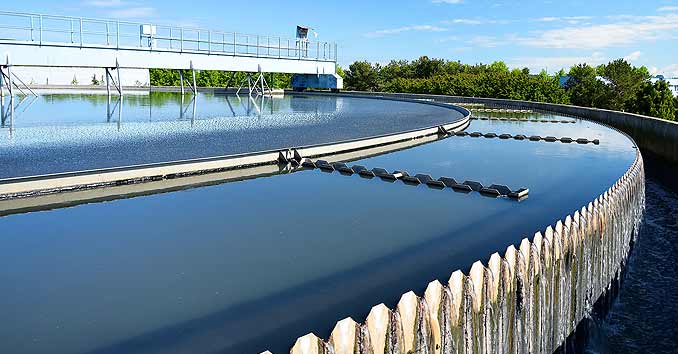
While many preppers understand the need for having an adequate water supply, I don’t think many people really understand what it means to lose their water for an extended period of time. Should the water system become compromised, it’s not just drinking water you’re going to have to think about. You’re going to need a way to do dishes, shower, and provide for all of your sanitation needs.
No power
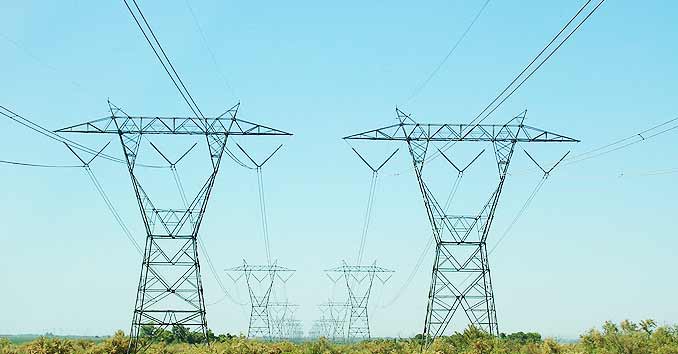
Think you’re ready to face an extended power outage, think again. In a recent survey, 90% of American admitted they would probably be dead within two weeks if ever faced with a complete shutdown of our national power grid. While those numbers may seem a bit shocking, they’re probably not that far from the truth.
Think about it; we live in a world that has become completely dependent on the power grid. Almost everything we do in some way depends on that grid. From the lights in your home and the television hanging on your wall, to even more critical services like the power that runs your local hospitals, and basically every other major service in your city, losing the grid to a large-scale disaster would completely change life as we know it.
No Computers and No Internet

It’s not just the loss of emails and Facebook that you’re going to have to worry about; in fact, almost every aspect of most modern people’s lives is in some way dependent on the Internet and other interconnected computer networks.
From the food that’s delivered to your local grocery stores to your bank accounts and medical records, if the grid goes down, or we ever face a large-scale cyber war that attacks our computer networks, we are in for some serious trouble.
No Phones, Facebook & Email

I made light of losing things like Facebook and email, but the fact is the way we communicate on a daily basis would completely change during a long-term SHTF disaster. If you haven’t thought about how you’ll communicate during a long-term crisis, you need to put it high on your list of preparedness priorities.
No Electronic Commerce
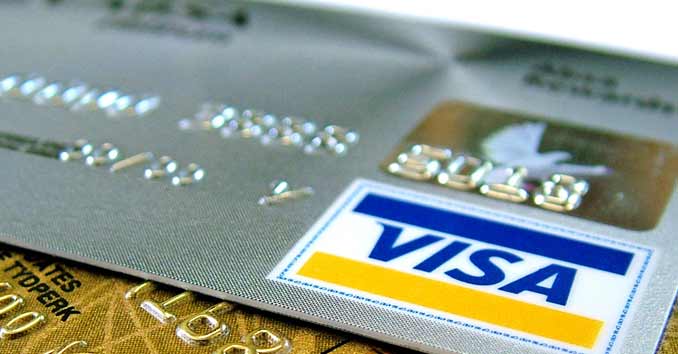
While many preppers think cash will become useless during an economic collapse, during the beginning phases of any long-term disaster or collapse situation it could be one of the most important lifelines you have. The fact is, once things go bad the only way you’re going to be able to buy goods is with cash.
Even during relatively small-scale disasters, like hurricanes or storms that take out the local power grid, electronic commerce is usually the first thing to go down. During a collapse type scenario, the problem will be compounded by the possible loss of everything in your bank accounts.
No Public Transportation
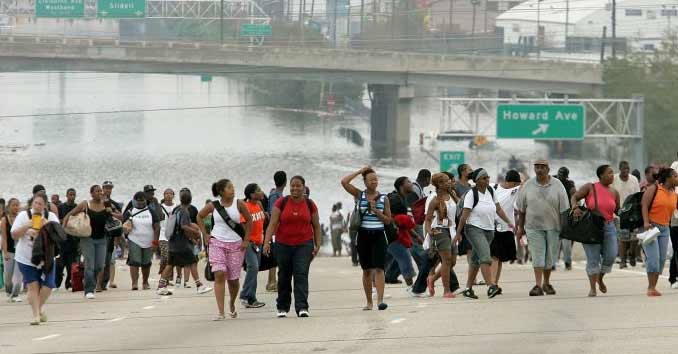
If you look at short-term disasters like Hurricane Katrina and Sandy, you will get a good look at how unprepared most people in urban areas are to survive. During both of those disasters, people who relied on public transportation were stuck in the disaster zones because they lacked the ability to leave once public transportation went down.
No Personal Transportation
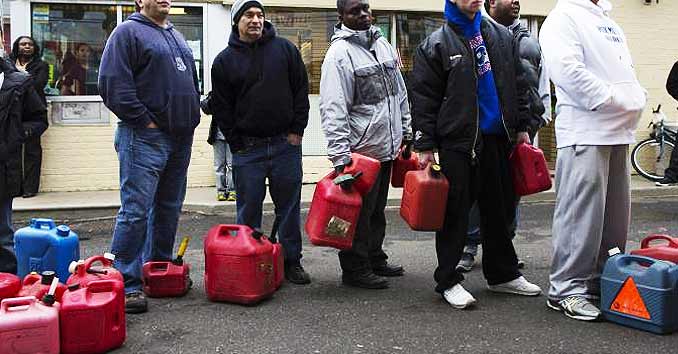
I always tell people to never let their gas tanks fall below half a tank. Once things go bad you’re going to need a way to get out, and once the gas trucks stop running you’re going to need to have a plan for obtaining fuel.
Think it’s far-fetched? In the aftermath of Hurricane Sandy, gas stations ran out of fuel within hours; those that did have fuel quickly started rationing supplies, limiting customers to fewer than 5 gallons of gas.
Figuring out what threats you’ll face during a long-term disaster:
This list is really meant to get you thinking; to really be prepared, you need to perform a thorough threat assessment. Performing a threat assessment will help you improve your ability to handle threats, manage threatening situations, and protect the people you love from harm.
Next Steps: Read our article on performing a survival threat assessment.




After watching the prepper blog and vidios I see a lot of mistkes that they make. Theres not that much to consider. Mocho will get them killed . Some say the lonewolf prepper will not last long. They are wrong. Not many think long term for others but for themselves only.
power can be taken care of that will run large building and if done right it can run a small town. They over look the simple things. The basic things that will cause them major problems. Your survival assessment should be done from both sides. Defender and attacker Easy as an attacker if there is more than one defender . People that show what they have on youtube may as weel tell people their address.
Scan the people you want in your group. average preppers will fade away gathering a small town would build and be better defended. Enough supplies to last 60 to 90 days with reserves to grow afterwards good start. After 60 to 90 days most will die out. People with money will go all out. If you live in an area get your maps right Get a manual can opener or a P-38 that thing has never faied me.
With the way people are acting these day it won’t be long before it jumps. Travel lite if you have to bug out multi pocket vest work very well. People want your stuff not you pack the vest and the backpack if they chase drop the bag as they will not take a chance of another in their group getting it. They stop you don’t , you can recoup when your safe . potato guns will do a lot of damage if you know what your doing and you know what to load them with. Take some of the ideas from other preppers . Imagination is they key .
You have provided some interesting insight but it would be even better if you knew how to communicate it.
Heck the first thing I’m looking forward to losing in a SHTF scenario – is weight!
One suggestion is purchase a nice used or new camper or rv, you can use it for recreation and it would be invaluable during a shtf event. Most campers and rv’s are self contained and are powered by 12 volts. What I’ve done is bought a decent sized portable solar panel to keep lights and water pump(both 12 volts) going, you can always carry water from a nearby stream or pond. I also stocked up on a few 20 lb propane tanks for heat, hot water and cooking. For a few hundred bucks (after you buy the rv ), you can put yourself in a position to hunker down in a comfortable situation for a few weeks. That’s my plan!!!
This is even more of a reason to stock up on barter items and “universal” currency like ammunition and precious metals.
I wondered how junk (pre 1965) U.S. coins would do in a financial collapse and whether the distrust of the currency would hurt their value.
A bicycle would be a great thing to have in a long term disaster scenario. It can be rigged to carry a backpack or other dead weight and it sure beats walking. My 20 year old bike doesn’t look like much (and very few thieves would even want to steal it), but it has a rack in front and one in back, and I can rig each rack with a basket or other container to carry fuel, groceries, a small pack, etc.
We will always have running water – the spring is uphill from the house :-) No propane deliveries? Build yourself a methane digester toilet. Your own waste will generate enough methane to cook your food. If you need more, say for canning, throw the livestock manure in there! No sense in being miserable, or letting everybody know you have power by running a generator. My husband learned how to dispatch lambs by cutting their throats. Silent meat. One guy in our valley is prepared to dynamite bridges on the roads leading in here.
Lots of good comments and ideas – how would a couple seek out other peppers willing to share ideas and preparedness in local areas? Needless to say, the time to think about this is now.
Where I grew up there were a number of people who didn’t have electricity , running water (hence no flush toilets) or telephone heated and cooked with wood . I agree that a large number of people will die .. But it will be by disease (IMO).. People need to unlearn the ” Push The Button Mentality”.. take time in your backyard to learn to cook with a Dutch Oven and/or a Reflector Oven. Learn how to start a fire after a week long rain.. learn how to use a kero lantern .. If you don’t know to even use hand tools …etc.
I don’t think we are going to be running into this kind of problem with Trump at the helm.
The best survival tool is a strong president such as Donald Trump. Use your creative imagination:
A light 22 caliber rifle, as much long rifle ammunition as possible and duct tape.
Cut a bicycle inner tube in half, pack it with a small magnifying glass, compass, strike any where wooden matches, wire, fish hooks and line, plastic ties, bleach tablets, beef jerky for bait, a whistle, a swiss army knife, needle and thread, lint from a clothes dryer. Pack it tight, then duct tape it shut.
Larger items for a back pack: all steel hatchet, two cup metal pot, sturdy saw, aluminum foil, tarp, wool clothing, light shoes, penicillin, iodine, small mirror, radio, flashlight and extra batteries.
Use your imagination and never give up.